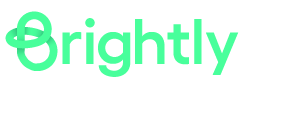3 Steps to Simplify Your CMMS Digital Transformation & Data Migration Strategy

So, you’ve made the big decision: to move to a new CMMS (computerized maintenance management system). And you want to make sure you’re making the change as seamlessly and easily as possible.
The good news for you is that we’ve helped clients do this over the past 20+ years, and we have some tips and tricks up our sleeve to help prepare you and your data for what’s next.
If you are undergoing a digital transformation leaving paper behind or migrating from a legacy CMMS, this post will help you make the most out of your data.
1. Make a plan and check it twice to find out what data is naughty and nice (data migration is coming to town)
Don’t trap yourself into thinking you need you need to move data that is unreliable. Doing that serves little purpose to future you, and it’s not something you would want to show a regulator. Make an archive of your old data or hold on to a backup and use it as a reference, not as the foundation to your new system. While this sounds like it will be more work, you will be happier with the outcome in the long term. This starts with setting standards for your new system.
2. Establish information standards
The good news is that this sounds harder than it is.
Here are some things to consider to help you lay the foundation for a successful roll-out of your new CMMS.
- Who will lead the data gathering review and preparation? Your team is your biggest asset. The more people who know how and why things are implemented, the more successful you will be in the long run.
- Have you assessed your data quality? Migrating to a new system is your chance to break old habits, revamp naming schemes, rework preventive maintenance tasks, etc. This is a great chance to clean up your data and processes and start fresh in a way.
- Who will be the system admin? Give your technicians a voice in the process, since they are the users that you need the most buy-in from, as they will be spending their days in the software.
Get 3 tips for helping employees embrace new technology.
- How would you like assets named?
- Think about when searching what term or number issued most.
- When thinking about asset management, sit down with your teams and talk through the naming scheme to find out what they call things and use that as a starting point. The air handler might be called AHU-1, but technicians might call it OR-AHU or AHU-1-OR-FLR3- when it comes to adding that asset to your software to note the location When your new CMMS goes live, one of the barriers of adoption is often that teams do not know how to find things. Make it easy for them by gathering their input and ideas.
- Think through how you want assets to show up on reports. For example, think about all those fire extinguishers and fire doors. All your fire extinguishers named “Fire Extinguisher” will be impossible to make sense of on a report. Envision what you want the end product to be and work back from there.
What data do you have what data do you need?
Give yourself permission to start fresh. Take the time to prioritize what you need to keep, what can be archived, based on what you use on a daily basis. Think through your preventive maintenance program and what will be used there. Plan ahead and consider your ideal future state so you don’t just start where you are leaving off with your old system.
This is your chance to completely evaluate your program and make changes for the better.
Plan out your calendar based on capacity and ability for shutdown and parts.
Taking the plunge with a partner
All the steps outlined above become infinitely easier when you have someone you trust walking you through them. That’s why it’s important to partner with a CMMS provider who is trusted and tested. Choose wisely and you will be set up for success for years to come.





